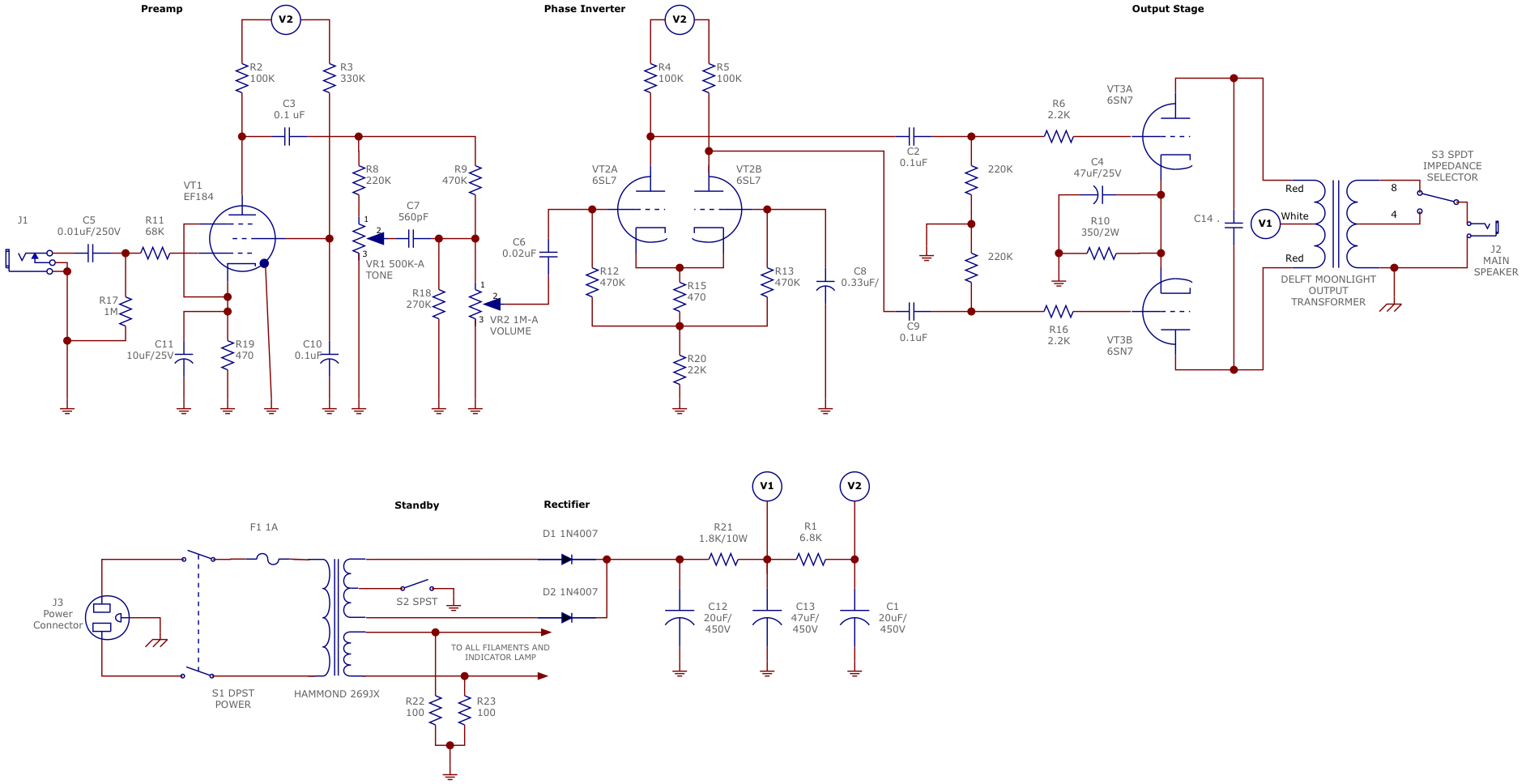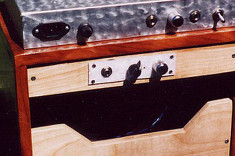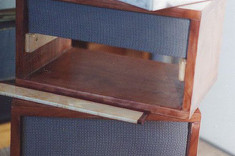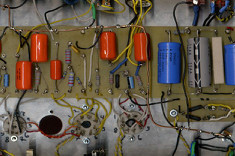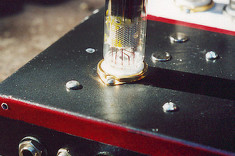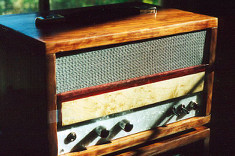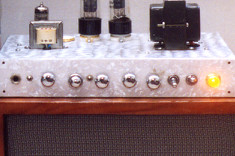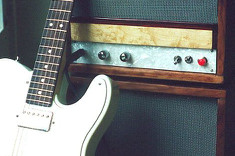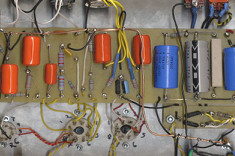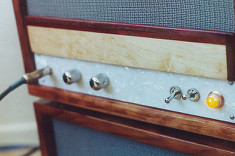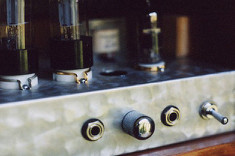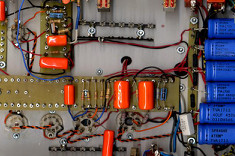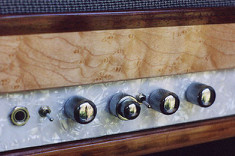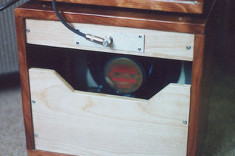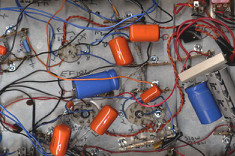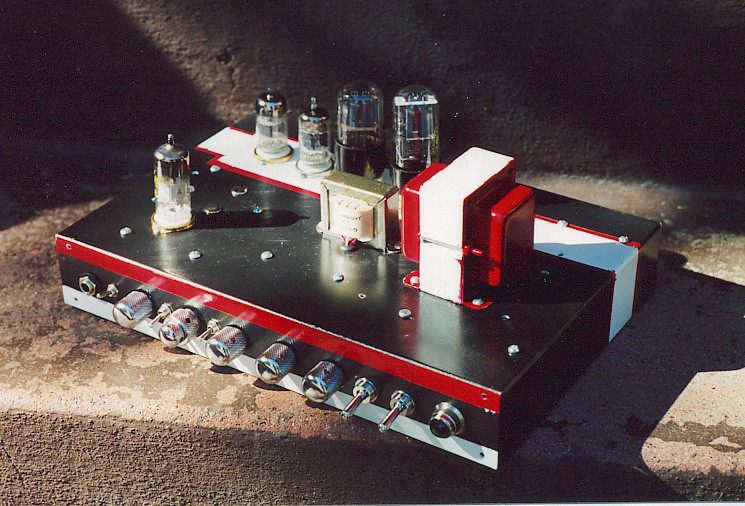
Table of Contents
Overview
The Moonlight, a 1-watt amplifier designed by Simcha Delft, was my first amp build, and responsible for getting me hooked on this hobby. I started looking around the Internet for low-wattage vacuum tube guitar amps, because my Music Man was just Too Damn Loud! I found a reference to the Moonlight circuit at Amptone, which eventually led me toAX84. I got one of Simcha Delft’s hand-wound Moonlight output transformers from now defunct transformer supplier Obsolete Electronics. Once I’d succesfully built this amp, I was hooked.
I’ve since re-built my Moonlight 3 times in a variety of configurations.
Compact Baxandall Tone Stack
My second full build of the Moonlight again featured a Baxandall tone stack, but one built onto a single concentric dual pot, to keep the spaced used to a minimum.
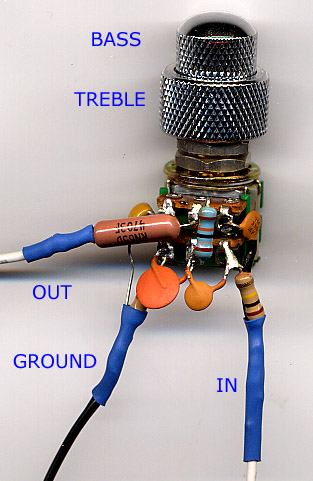
I made a rough layout for this one in Visio prior, to make sure it was in the realm of possibility.
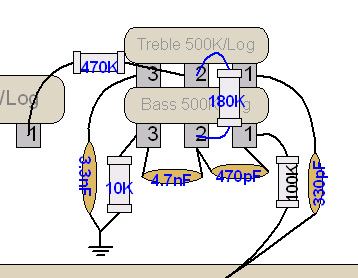
Variations
12AU7 Output Modification
Inspired by a thread on the AX84 BBS, I added a 12AU7 output tube option to my Moonlight, with excellent (IMHO) results. See the Moonlight-12AU7-Schematic.pdf download link for the modified schematic. This option was eventually removed from my Moonlight, as I built the LunchBox as a dedicated 12AU7 amp, and to make room for the tube-driven reverb experiment.
Zener B+ Dropping Circuit
The 12AU7 mod required adding a Zener diode to the power supply to reduce the B+ voltage to avoid frying the tube.
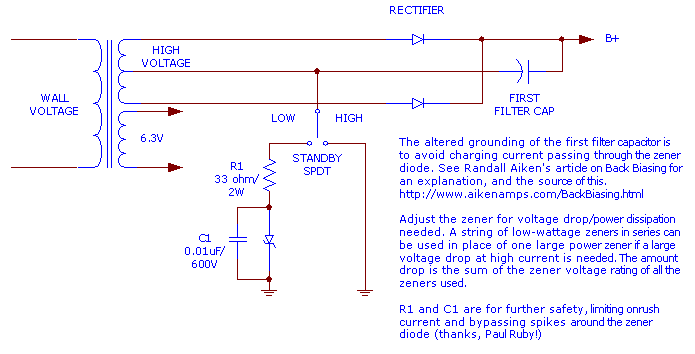
Switchable Tone Stacks
At one point, wanting to be able to A/B compare the sounds of different tone stacks, I built two tone stacks with a switch to alternate which one was in the signal path.
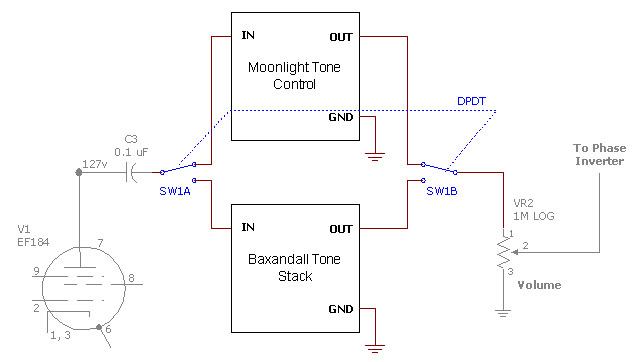
Capacitor Driven Reverb
The current incarnation of my Moonlight is a rebuild adding a
capacitor-driven reverb circuit. I’d wanted to add reverb to an amp
for a while, and wanted to try to keep the component down, and avoid
needing to purchase another transformer if possible. To that ends I
started looking at capacitor driven reverb circuits driving a
high-input impedance reverb tank. Handily, my Music Man combo has such
a tank (A 4FB3A1B – try it out in the reverb decoder; driven by op
amps in the MM) which I could use. I looked
at Ampeg, Traynor,
and Univox schematics for ideas, primarily.
Circuit
The input stage, phase inverter, and output stage are identical to the standard Moonlight. This schematic adds the reverb driver & recovery stages and a mix control to mix the reverb & dry signals. Still needs tweaking for the appropriate Dwell & Mix ranges. The changed impedances due to the reverb circuit also slightly change the overall character of the amp. It’s a bit brighter and raunchier than the “stock” Moonlight.
See the MoonVerb-Schematic.pdf download link (to the right) for the schematic.
Caveats
Here’s the text of a message I posted to the AX84 BBS about the problems with this circuit.
1) As it stands at the moment you can’t turn the reverb all the way off. With the mix control all the way down there’s still a fair amount of reverb.
2) The Dwell control isn’t very useful at the moment because I haven’t tweaked its range. About the first 10% is useful, but above that there’s just too much signal driving the reverb tank, and the reverb signal is distorted. It’s actually a kind of interesting sound, but not very useful.
3) It leaves an unused triode in the 12AX7. there’s nothing really wrong with that, but I hate wasting triodes. I’m planning an update which will use it (see below)
4) Due to the resistive mixing of the dry & wet channels, it reduces the amount of gain driving the PI. And of course, with the way I’ve set up the mix control, as you turn the reverb up, you’re actually also turning the dry signal DOWN. So right now my Moonverb is a lot cleaner than the Moonlight.
What I’m going to try with this amp is driving the reverb with only 1 section of the 12AT7 and recovering with the other. Then using both sections of the 12AX7 as an anode mixer for the dry & wet signals. That way I can adjust the dry & wet levels independent of each other. It will retain the ability to make the wet signal louder than the dry, but hopefully without sacrificing the gain on the dry signal.
I’m also going to add a reverb tone control, as the reverb signal is pretty bright.
Links
- John Fleig’s cool all-octal, higher-power Moonlight build. The same author has also built a beautiful stock Moonlight
- The Moonlight is no longer an active AX84 project, but its archives can be found here
